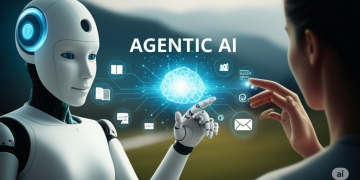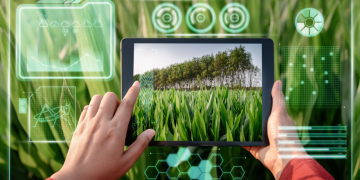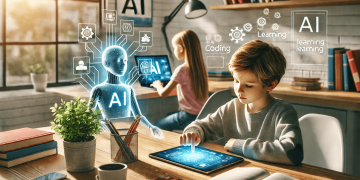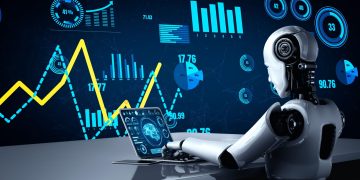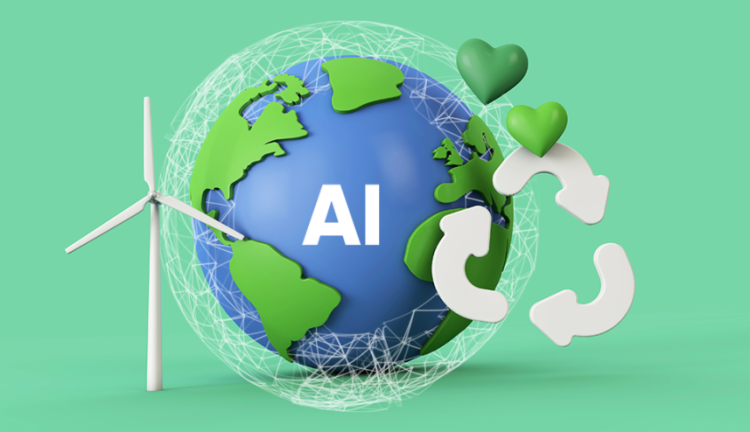As the climate crisis intensifies, nations, industries, and research institutions are turning to advanced technologies for scalable solutions. Among these, Artificial Intelligence (AI) stands out as a transformative force, not only in understanding the planet’s complex systems but also in enabling actionable strategies to mitigate climate change.
From energy optimization and emissions forecasting to biodiversity protection and climate modeling, AI is redefining how we combat environmental degradation. This article explores how AI contributes to climate resilience and highlights the successful practices of industry leaders pioneering this effort.
I. The Role of AI in Climate Change Solutions
AI technologies—especially machine learning, deep learning, and computer vision—are ideally suited to address the multidimensional challenges of climate change due to their ability to:
- Process massive, complex datasets (e.g. satellite imagery, sensor networks, climate models)
- Detect patterns and forecast trends with high accuracy
- Optimize systems for energy efficiency and resource allocation
- Support real-time decision-making in dynamic environments
Applied correctly, AI can help both mitigate emissions and adapt to unavoidable climate consequences.
II. Key Application Areas Where AI Is Driving Impact
1. Energy System Optimization
AI enables real-time management and forecasting in smart grids, ensuring that renewable energy sources (solar, wind) are used efficiently and reliably despite their intermittency.
Case Example: Google DeepMind – Energy Efficiency in Data Centers
Google used DeepMind’s AI to reduce energy usage in its data centers by 30% by optimizing cooling systems. The AI system analyzes thousands of variables (e.g. weather forecasts, workload, temperature) to predict and control energy consumption in real time.
Insight: Even modest efficiency gains at industrial scale have enormous environmental impact. Smart optimization can be deployed in manufacturing, data centers, and buildings worldwide.
2. Carbon Emissions Monitoring and Forecasting
Tracking and reducing carbon emissions requires precise data and prediction models. AI is being used to detect emission sources, model future emissions, and suggest mitigation pathways.
Case Example: Climate TRACE (Global Consortium)
Spearheaded by Al Gore and powered by AI, Climate TRACE uses satellite data and machine learning to map greenhouse gas emissions from over 70,000 sources in near real time. It gives policymakers transparent, independent emissions data for better regulation and enforcement.
Insight: Transparency and accountability are critical. AI makes invisible emissions visible, enabling smarter climate diplomacy and business accountability.
3. Climate Modeling and Extreme Weather Prediction
Traditional climate models are computationally intensive and often lack real-time responsiveness. AI enhances modeling by improving resolution, speed, and reliability of forecasts.
Case Example: Nvidia Earth-2
Nvidia is building a digital twin of Earth using AI and its Omniverse platform. The system is designed to simulate climate scenarios at high resolution to aid in understanding and adapting to future conditions.
Insight: High-precision simulations empower governments and businesses to plan infrastructure, agriculture, and insurance around future climate risks.
4. Precision Agriculture and Land Use Optimization
AI helps farmers reduce water, fertilizer, and pesticide use by offering crop-specific recommendations, detecting early signs of drought or disease, and optimizing yield under changing climate conditions.
Case Example: IBM’s Watson Decision Platform for Agriculture
IBM’s AI platform integrates weather data, satellite imagery, and IoT sensor data to advise farmers on irrigation, planting schedules, and crop rotation, helping maximize yield while minimizing environmental impact.
Insight: Agriculture is both a contributor to and a victim of climate change. AI can improve food security while reducing emissions.
5. Disaster Response and Climate Adaptation
As extreme weather events increase, AI supports disaster readiness and response by analyzing past patterns, modeling risk, and enabling real-time situational awareness.
Case Example: One Concern (U.S.)
One Concern uses AI to predict natural disaster impacts at the neighborhood level, providing cities with risk maps that inform evacuation, infrastructure investment, and insurance pricing.
Insight: Localized risk intelligence is essential for urban climate resilience. AI empowers proactive responses, saving lives and property.
6. Climate Finance and Investment
Investors are increasingly looking to align portfolios with climate goals. AI helps assess environmental, social, and governance (ESG) metrics, detect greenwashing, and quantify climate risk exposure.
Case Example: MSCI ESG AI Analytics
MSCI uses machine learning to analyze company disclosures, news, and satellite data, helping investors screen for sustainable companies and avoid high-risk sectors.
Insight: Financial markets are critical in the low-carbon transition. AI helps direct capital to genuinely sustainable assets.
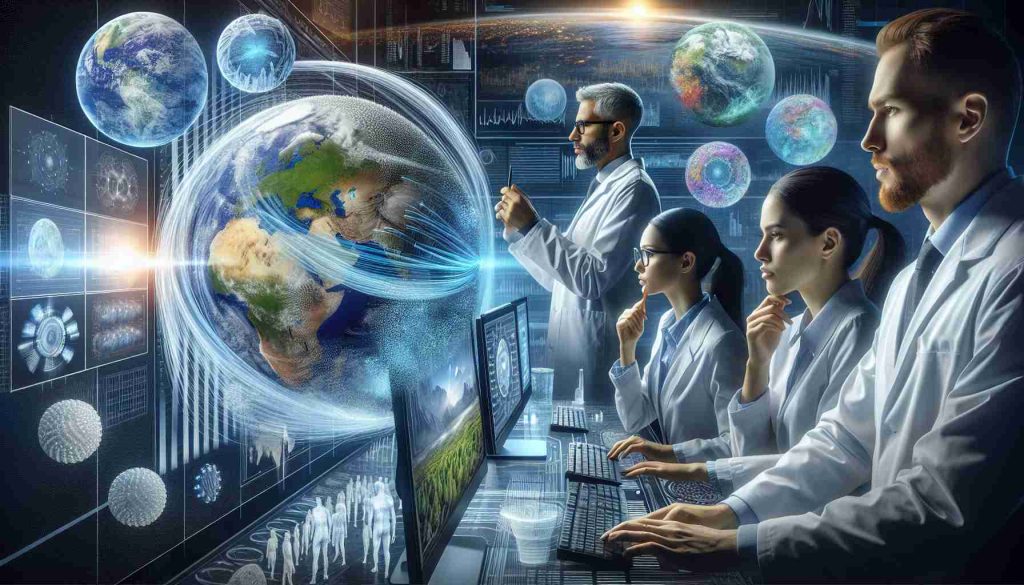
III. Challenges to Scaling AI for Climate Action
Despite its promise, AI is not a silver bullet. Several barriers must be addressed to ensure it contributes meaningfully and ethically:
- Data access and quality: Climate solutions require high-resolution, real-time, and publicly accessible data. In many regions, such data is sparse or proprietary.
- Computational cost: Training large AI models, especially in climate modeling, consumes energy. Green AI practices are needed to ensure net benefits.
- Bias and equity: AI systems may overlook marginalized communities or ecosystems unless designed with equity in mind.
- Lack of cross-sector collaboration: AI developers, environmental scientists, and policymakers must work closely to ensure solutions are actionable and grounded in reality.
IV. Lessons from Industry Leaders
From the practices of leading AI and sustainability organizations, a few core principles emerge:
1. Integrate AI with Human Expertise
AI excels at pattern recognition and prediction, but climate decision-making still requires expert judgment. For example, IBM and NASA collaborate closely with agronomists, meteorologists, and local farmers to interpret AI outputs.
2. Make Tools Open and Scalable
Initiatives like Climate TRACE provide free access to emissions data. Google and Microsoft have released open-source AI tools for forest monitoring and sustainability modeling, accelerating global impact.
3. Design for Inclusivity and Global Reach
AI solutions developed in the Global North must be adapted for local conditions, languages, and infrastructure in the Global South. Sectors like agriculture and urban resilience benefit most when tools are co-designed with local communities.
4. Commit to Climate-Smart AI Infrastructure
Leaders like Google and Microsoft power their AI operations with renewable energy and invest in carbon removal. Efficient model training and sustainable data centers are essential.
V. The Road Ahead: A Climate-First AI Agenda
To maximize AI’s contribution to climate solutions, future efforts should prioritize:
- Climate-focused innovation funding, including public-private partnerships
- Ethical AI standards for environmental applications
- Open climate data platforms to democratize access for researchers and communities
- AI literacy among policymakers, ensuring informed adoption and governance
- Integration with circular economy and biodiversity efforts, acknowledging the broader ecological context
Conclusion
Artificial Intelligence is rapidly becoming one of the most powerful tools in humanity’s response to climate change. While no technology alone can reverse the climate crisis, AI’s ability to illuminate hidden patterns, optimize complex systems, and support data-driven action makes it an essential part of the solution.
From smart energy systems and transparent emissions tracking to disaster preparedness and sustainable agriculture, AI is already helping reshape industries and inform public policy. The experiences of global leaders show that, with the right collaboration and ethical design, AI can move us faster and smarter toward a sustainable, climate-resilient future.







